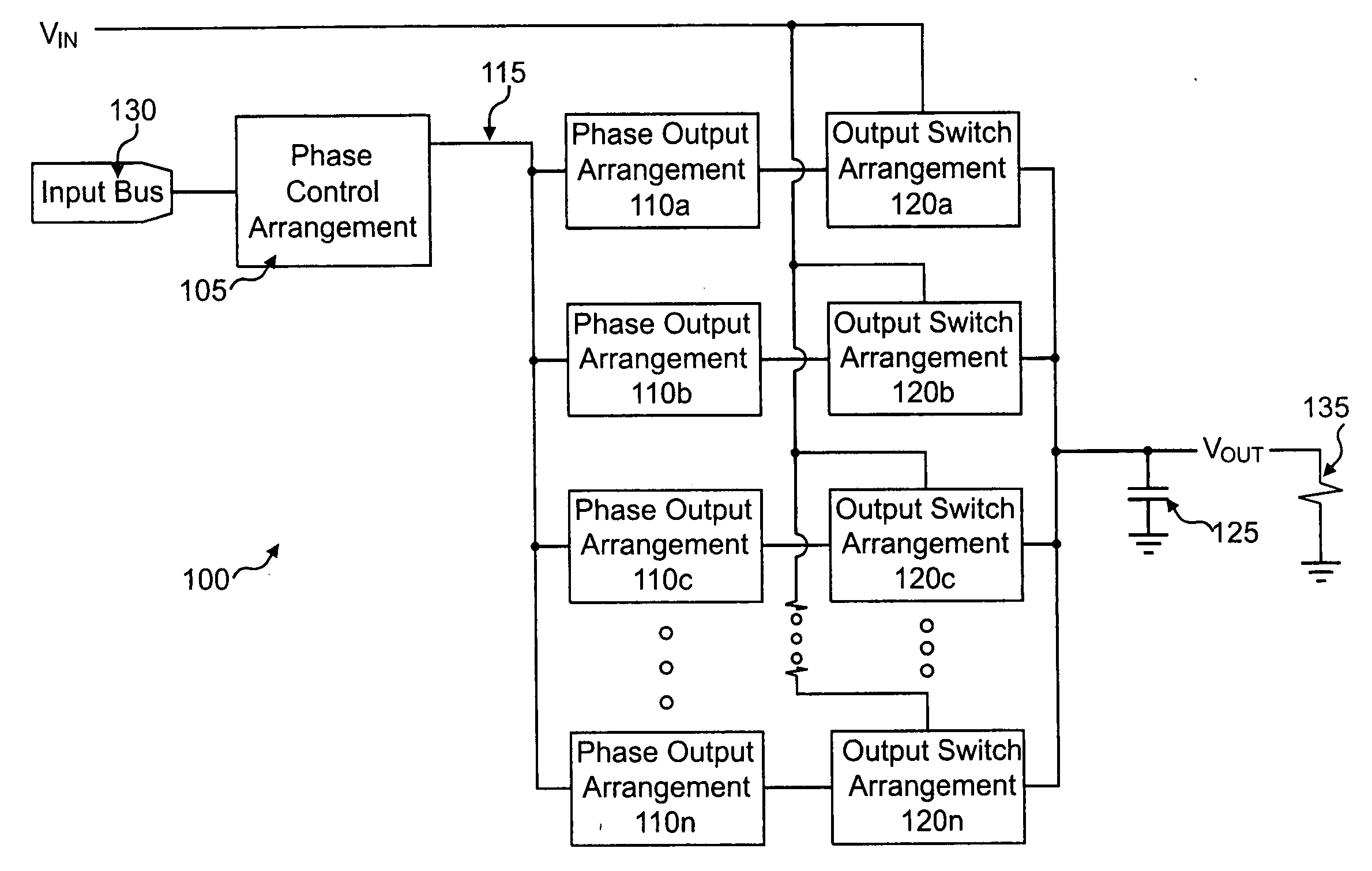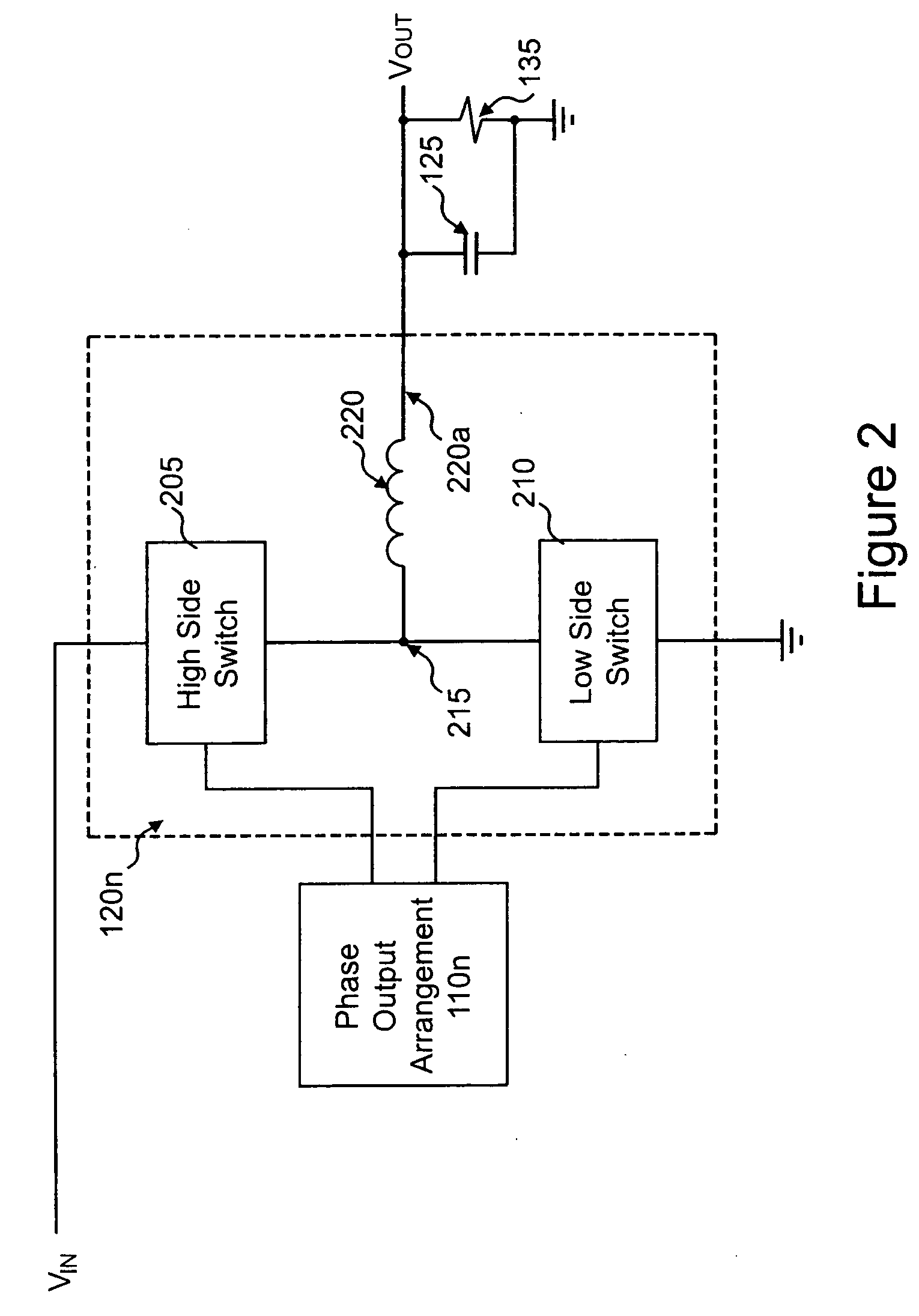Multi-phase buck converter
a multi-phase buck converter and converter technology, applied in the direction of electric variable regulation, process and machine control, instruments, etc., can solve the problems of damage to the circuitry connected to the output, the conventional multi-phase buck converter does not provide a robust architecture capable of easy expansion, and the conventional multi-phase buck converter does not optimally control the output voltage. , to achieve the effect of efficient and simpl
- Summary
- Abstract
- Description
- Claims
- Application Information
AI Technical Summary
Benefits of technology
Problems solved by technology
Method used
Image
Examples
Embodiment Construction
Referring now to FIG. 1, there is seen a first exemplary multi-phase buck converter 100 according to the present invention. Buck converter 100 includes phase control arrangement 105 electrically and communicatively coupled to input bus 130, phase output arrangements 110a, 110b, 110c, . . . , 110n electrically and communicatively coupled to the phase control arrangement 105 via a phase control bus 115 (e.g., a 5-wire analog bus), output switch arrangements 120a, 120b, 120c, . . . , 120n electrically and communicatively coupled to an input voltage (VIN) and phase output arrangements 110a, 110b, 110c, . . . , 110n, an output capacitor 125 electrically coupled to the output switch arrangements 120a, 120b, 120c, . . . , 120n for producing an output voltage (VOUT), and a load 135 electrically connected between the output voltage (VOUT) and ground.
The exemplary multi-phase buck converter 100 of FIG. 1 may be used, for example, in applications requiring small sizes, design flexibility, v...
PUM
 Login to View More
Login to View More Abstract
Description
Claims
Application Information
 Login to View More
Login to View More - R&D
- Intellectual Property
- Life Sciences
- Materials
- Tech Scout
- Unparalleled Data Quality
- Higher Quality Content
- 60% Fewer Hallucinations
Browse by: Latest US Patents, China's latest patents, Technical Efficacy Thesaurus, Application Domain, Technology Topic, Popular Technical Reports.
© 2025 PatSnap. All rights reserved.Legal|Privacy policy|Modern Slavery Act Transparency Statement|Sitemap|About US| Contact US: help@patsnap.com



